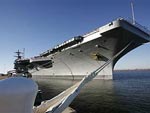 After being under construction for almost a decade, the aircraft carrier George H. W. Bush was accepted by the US Navy following final seatrials last Friday.
After being under construction for almost a decade, the aircraft carrier George H. W. Bush was accepted by the US Navy following final seatrials last Friday.
Northrop Grumman delivers Bush aircraft carrier to Navy
Continue reading

 After being under construction for almost a decade, the aircraft carrier George H. W. Bush was accepted by the US Navy following final seatrials last Friday.
After being under construction for almost a decade, the aircraft carrier George H. W. Bush was accepted by the US Navy following final seatrials last Friday.
Northrop Grumman delivers Bush aircraft carrier to Navy
Continue reading

Zac & Abby Sunderland, Jessica Waston & Mike Perham
In July of last year, Zac Sunderland, a 17-year-old from Southern California, became the youngest person to sail around the world alone. He held that tile for only about a month as the British 17 year old sailor, Mike Perham, who was a few months younger than Zac, completed his circumnavigation. Both Zac and Mike made at least one stop along the way around the globe.
Continue reading
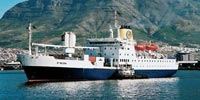 Delivery service for the remote island of St Helena
Delivery service for the remote island of St Helena
The tiny British colony of St Helena in the South Atlantic – the world’s most remote inhabited island – is being hit by Whitehall’s spending cuts. An airport considered by many to be vital for the island’s future has been cancelled.
The Royal Mail Ship St Helena currently delivers all sorts of supplies to the community. Second officer Mia Henry gave BBC News a tour of the ship’s bridge and cargo hold. Click here to view the video.
Continue reading
 A great story from the Yachtpals blog. Organized by the non-profit group Oceans Watch, a flotilla of at least a dozen yachts loaded with aid for Haiti, led by the 74 foot schooner Wolf, will set sail from Key West on February 8th. A second flotilla is gathering in Jamaica, and there are more yachts throughout the Caribbean either planning to set sail or already en route.
A great story from the Yachtpals blog. Organized by the non-profit group Oceans Watch, a flotilla of at least a dozen yachts loaded with aid for Haiti, led by the 74 foot schooner Wolf, will set sail from Key West on February 8th. A second flotilla is gathering in Jamaica, and there are more yachts throughout the Caribbean either planning to set sail or already en route.
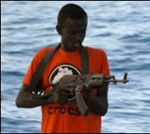 Last week we posted about the International Chamber of Shipping’s concern that governments are not doing enough to combat piracy. Now the British government, after long opposing the payment of ransoms to free hijacked ships is also trying to discourage the use of armed guards on UK merchant ships. British government policy appears to be to not provide adequate naval defenses against piracy, to oppose the shipowner’s use of onboard guards and then to oppose the ship owner’s payment of ransom to free hijacked ships and crews.
Last week we posted about the International Chamber of Shipping’s concern that governments are not doing enough to combat piracy. Now the British government, after long opposing the payment of ransoms to free hijacked ships is also trying to discourage the use of armed guards on UK merchant ships. British government policy appears to be to not provide adequate naval defenses against piracy, to oppose the shipowner’s use of onboard guards and then to oppose the ship owner’s payment of ransom to free hijacked ships and crews.
Continue reading
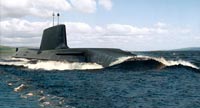 Last week a navy commander and two fellow officers pleaded guilty to crashing the HMS Superb, a British nuclear submarine, in 2008, into a massive stone pinnacle under the Red Sea which was marked on maritime charts.
Last week a navy commander and two fellow officers pleaded guilty to crashing the HMS Superb, a British nuclear submarine, in 2008, into a massive stone pinnacle under the Red Sea which was marked on maritime charts.
Navy commander crashed £32m British submarine after failing to ensure craft’s ’safe direction’
Continue reading
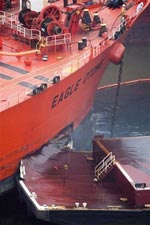 An Aframax tanker, the Eagle Otome, collided with an oil barge in the Sabine Neches Waterway at Port Arthur, Texas on Saturday. Initial reports suggested 12, 000 barrels of crude oil were unaccounted for, though local officials are now estimating that approximately 1,000 barrels were actually spilled. The crude oil spill is reported to have been contained to a two-mile area and was not believed to have hurt any local wildlife. No injuries were reported but 100 residents were evacuated from the area for about seven hours Saturday morning.
An Aframax tanker, the Eagle Otome, collided with an oil barge in the Sabine Neches Waterway at Port Arthur, Texas on Saturday. Initial reports suggested 12, 000 barrels of crude oil were unaccounted for, though local officials are now estimating that approximately 1,000 barrels were actually spilled. The crude oil spill is reported to have been contained to a two-mile area and was not believed to have hurt any local wildlife. No injuries were reported but 100 residents were evacuated from the area for about seven hours Saturday morning.
Coast Guard: Oil spill in Texas waterway contained
Continue reading
 An intriguing article from the Sunday Times:
An intriguing article from the Sunday Times:
Hunt is on for SS Gairsoppa’s £70m silver hoard
AN official attempt to find a ship containing £70m worth of silver, which was sunk during the second world war, is to be announced by the government tomorrow. It has teamed up with a private company in the hope of salvaging the treasure.
Continue reading
 Sam Willis has written what appears to be a fascinating book – Fighting Temeraire.
Sam Willis has written what appears to be a fascinating book – Fighting Temeraire.
J.M.W. Turner’s painting, The Fighting Temeraire Tugged to her Last Berth to be Broken Up, hangs in the National Gallery in Trafalgar Square and was recently voted to be Britain’s favorite painting, by a landslide, in a BBC4 poll. Sam Willis, a naval historian known for his previous books Fighting Ships 1750-1850 and Fighting at Sea in the Eighteenth Century, writes that despite the popularity of Turner’s work, ”few people know anything of life on board, or of the terrible sacrifices made by her crew… I decided to write a book about the Fighting Temeraire – a choice, in part, inspired by Turner’s great painting.”
Willis has quite a tale to tell. In yesterday’s Daily Mail, he writes:
Unlocking the bloody history of the ship made famous by Turner, the Fighting Temeraire
Continue reading
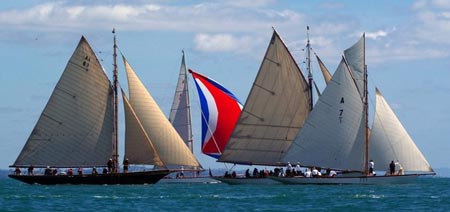
Oceanbridge Auckland Anniversary Day Regatta turns 170, Feb 1, 2010
On Monday, 1 February 2010, New Zealand’s oldest sporting event, the Auckland Anniversary Day Regatta will celebrate its 170th anniversary with a celebration of our maritime history and heritage on land and sea with a fleet of sail boats, classic yachts, tugboats and tall ship as well as two Australian contenders.
Continue reading
 Crowley Establishing Flow of Relief Cargo Into Haiti
Crowley Establishing Flow of Relief Cargo Into Haiti
Crowley Maritime Corporation, working under contract with the U.S. Transportation Command (USTRANSCOM), is unloading Haiti relief cargo in Rio Haina, Dominican Republic, today. Fifty six of the 68 20-foot containers of water and meals-ready-to-eat (MREs) will be trucked across the border into Haiti.
Continue reading
 In November we posted about the USS New York’s commissioning in its namesake city. The new amphibious transport dock ship, the fifth of the San Antonio-class, was built with seven and a half tons of steel from the rubble of the World Trade Center cast for the ship’s bow. A recent spot check of the ships of her class showed that 10 percent to 15 percent of the welds used in the construction were undersized. As the welding was primarily related to pipes, at least we won’t have to worry about the “front falling off.”
In November we posted about the USS New York’s commissioning in its namesake city. The new amphibious transport dock ship, the fifth of the San Antonio-class, was built with seven and a half tons of steel from the rubble of the World Trade Center cast for the ship’s bow. A recent spot check of the ships of her class showed that 10 percent to 15 percent of the welds used in the construction were undersized. As the welding was primarily related to pipes, at least we won’t have to worry about the “front falling off.”
That is not the only problem on the USS New York. She is currently under repair following a bearing failure on her main propulsion diesels. The bearing problem is not unique to the SS New York but appears to be shared by other San Antonio class ships of which the USS New York is the fifth of nine to be built.
LPD amphibious assault ship welds are a concern for Navy
Continue reading
 While the amphibious assault ship USS Bataan arrived in Haiti yesterday and the hospital ship USNS Comfort arrived the day before, naval ships are not the only vessels sailing to aid the earthquake victims. The schooner Amistad is on her way bearing both supplies and a sense of history. The schooner Amistad , a replica of the slave ship on which the captives revolted and took over the ship in 1839, is sailing to the only nation in the western hemisphere to achieve independence through a slave rebellion.
While the amphibious assault ship USS Bataan arrived in Haiti yesterday and the hospital ship USNS Comfort arrived the day before, naval ships are not the only vessels sailing to aid the earthquake victims. The schooner Amistad is on her way bearing both supplies and a sense of history. The schooner Amistad , a replica of the slave ship on which the captives revolted and took over the ship in 1839, is sailing to the only nation in the western hemisphere to achieve independence through a slave rebellion.
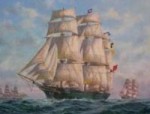 More talks to save the fine old ship from being broken up. Only time will tell whether anyone will come up with the funds to rescue her.
More talks to save the fine old ship from being broken up. Only time will tell whether anyone will come up with the funds to rescue her.
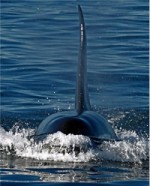 Two only slightly related items : “An orca baby boom” in Washington State following a year that saw a decline in the number of orcas in the southern resident pods, and a very funny, if highly offensive, episode of South Park, in which the kids teach the Japanese to stop slaughtering whales and dolphins and to start slaughtering cows and chickens like Americans do. Thanks to Bowsprite for passing it along.
Two only slightly related items : “An orca baby boom” in Washington State following a year that saw a decline in the number of orcas in the southern resident pods, and a very funny, if highly offensive, episode of South Park, in which the kids teach the Japanese to stop slaughtering whales and dolphins and to start slaughtering cows and chickens like Americans do. Thanks to Bowsprite for passing it along.
Tom Russell is hosting the Tall Ship & Traditional Sail Professionals Group on LinkedIn. It is a very interesting group. He writes:
If you’ve worked on a tall ship, for its supporting organization or in other traditional sail, feel free to join the group below. Simply add the traditional sail info to your profile.
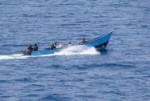 The International Chamber of Shipping (ICS) issued a statement which we think is right on target. The current policy of disrupting but not consistently apprehending pirates has been a failure.
The International Chamber of Shipping (ICS) issued a statement which we think is right on target. The current policy of disrupting but not consistently apprehending pirates has been a failure.
The unacceptable situation prevailing now, with seafarers lives being threatened on a daily basis – and Somali pirates still operating with impunity – cannot be allowed to continue.
It is particularly upsetting when the main focus of some senior politicians is limited to commenting on their objections to the payment of ransoms. But given the inability of the international community to intervene in Somalia, the shipowner currently has little alternative when confronted with seafarers being held hostage.”
Continue reading
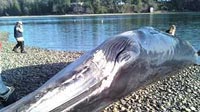 What appears to be the carcass of a Bryde’s whale has washed ashore in Case Inlet in Puget Sound in Washington State. If it is a Bryde’s whale, it is a mystery what a whale that favors tropical waters was doing in the frigid waters of the Pacific Northwest.
What appears to be the carcass of a Bryde’s whale has washed ashore in Case Inlet in Puget Sound in Washington State. If it is a Bryde’s whale, it is a mystery what a whale that favors tropical waters was doing in the frigid waters of the Pacific Northwest.
Cetaceous stranger washes up in Puget Sound
Continue reading
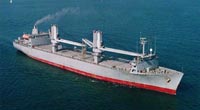
SS Cornhusker State
The US military hopes to have the port of Port-au-Prince open for shipments of emergency relief supplies in two or three days.
Damaged Haiti port to open in 2-3 days: U.S. commander
In related news, the Maritime Administration has ordered the activation of the crane ships, SS Gopher State and the SS Cornhusker State, both based in Norfolk. The SS Cape May, a SEABEE class Heavy lift/Barge Carrier, was also activated as was the OPDS SS Petersburg, an Offshore Petroleum Discharge System tanker, based in Alameda, CA and the high speed ferry M/V Huakai, based in Norfolk, VA.
UPDATE: Maran Tankers Management Inc. said the crew – 9 Greeks, 16 Filipinos, 2 Ukrainians, and a Romanian – was safe and well.
In strange turn, pirates send out an SOS
Unconfirmed reports suggest that infighting between rival pirate gangs may have disrupted payment of the ransom and the release of the ship.